Osteospermum spp.
I don’t keep osteospermum in every container I plant for clients, but they’re present in most of what I put together.
It’s impossible for me to pass on these flowers, even with other more exotic choices to pick from. They’ve got a perfect blend of color, form, and bubbly cheeriness without going over the top like other flowers… I’m looking at you, fuchsia!
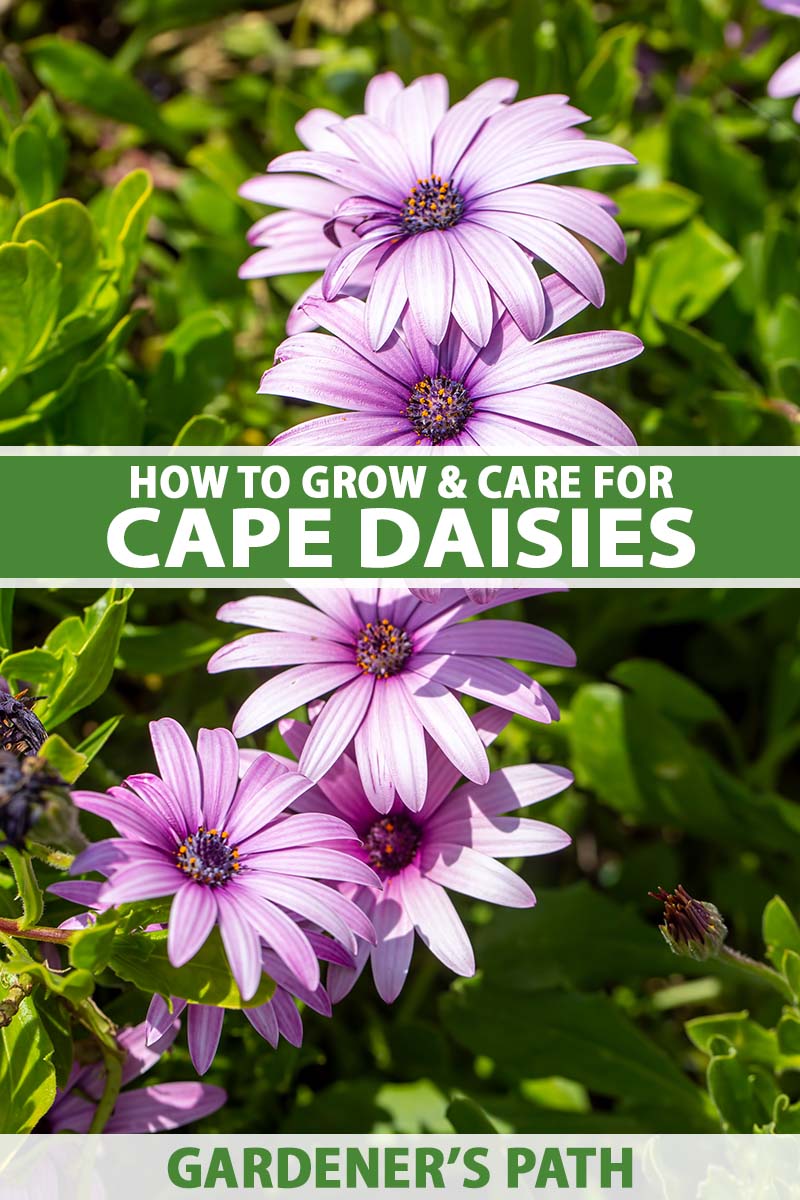
We link to vendors to help you find relevant products. If you buy from one of our links, we may earn a commission.
Although I’ve yet to add osteospermum to my own garden beds at home, I’ve been growing them for clients over the years.
I don’t think I’ve had any other flower requested year after year as much as the Cape daisy. They’re available in shades of purple, orange, yellow, white, and pink, so there’s an option available for everyone.
Are you familiar with osteospermum, or are you getting started with growing them? Let’s get into it and see what we can learn, or be reminded of, when it comes to growing these flowers!
What You’ll Learn
Cultivation and History
Relative newcomers to the American gardening scene, osteospermum plants have a handful of nicknames, including the African daisy, Cape daisy, and star of the veldt.
It traces its history as an ornamental landscape plant to South Africa. Now the “Cape” reference makes sense!

There’s another related plant also known as African daisy or Cape marigold, which is an annual. You can read more about Cape marigolds in our guide.
Osteospermum has gone in and out of popularity over the years since its introduction to the North American and European gardening world.
Originally, gardeners were hesitant to use the Cape daisy because the flower heads would often close up during prolonged periods of cloudy weather, but the bright faces and radiant petals proved to outweigh that tiny drawback.
It has become increasingly popular in the US over the last few decades, and you can be sure to find these plants in just about any garden center.
Most of these are cultivars or hybrids of O. barberae, O. caulescens, O. ecklonis, O. fruticosum, O. jucundum, and O. grandiflorum.
As an added bonus, you might actually find your osteospermum under a totally different name.
Not long ago, our African daisy was classified in the Dimorphotheca genus, along with the aforementioned Cape marigold (Dimorphotheca sinuata), but the name was officially changed, so don’t be surprised if you spot a Cape daisy with its original – but now incorrect – botanical name!
Propagation
Although most of the time you’re going to be looking for live plants at garden centers, the Cape daisy also grows readily and eagerly from seed and from cuttings.
From Seed
If you’re directly seeding your osteospermum, wait until any danger of frost has passed. The seedlings can’t tolerate cold temperatures, so you’ve got to be patient if you’re direct sowing.
A bit of sunshine and light is vital to the growth of osteospermum seeds, but they will also need a small degree of cover.
The seeds aren’t especially particular, and as long as the soil is of decent quality, they will grow. Stiff, compacted soil on the other hand likely won’t allow them to thrive, so you’ll want to find a different location if this sounds like your hard ground.
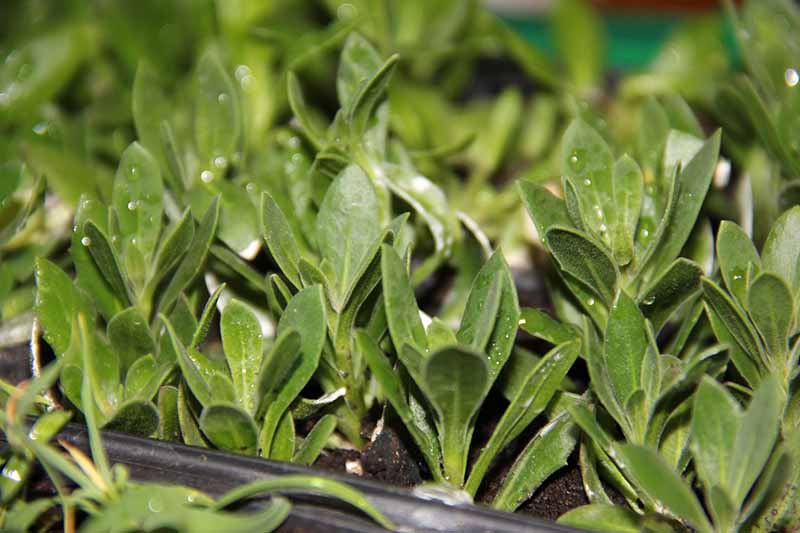
I recommend adding a very light layer of compost over the top of the seeds, just enough that the seeds aren’t going to get washed away by the hose or the rain.
And while we’re on the topic of water, it’s best to aim for about an inch of water a week. Use a watering can or the mist setting on your hose nozzle to avoid washing away the seeds with a powerful torrent of water.
It can be difficult to accurately measure how much water your garden is getting. You can use a rain gauge like this one that’s available via Amazon, or you can simply go by feel. Don’t let the soil dry out too much between waterings and you’re good.
When I say a thin layer, I mean it! Ideally, it’s going to be no more than the thickness of the seed. Another option is to lay down that thin layer of compost first, and then sprinkle the seeds over top of it.
You can sow the seeds a few inches apart, or – if you’re like me and you like to do it live – just scatter the seeds over the area where you want them to grow.
You won’t see any germination for about three weeks, so be patient! Once they’re up, you can thin the seedlings out so there’s about six inches of space between each.
You will get your first blooms in the late summer and they’ll continue throughout the fall if you direct sow, so it’s definitely a method reserved for the patient gardener.
If you’re growing your osteospermum seedlings indoors, they can be started eight to 10 weeks before the last frost date in your area.
They should be hardened off to the outdoors over a period of two weeks. I plant about three seeds per cell and thin them out when they’re about two inches tall.
A final note on growing from seed: most osteospermums don’t grow true to seed, so while any seeds you harvest might grow and bloom, they won’t look like the plant you took them from. The great majority of plants you’re going to find are hybrids.
From Cuttings
Not my favorite or best method for propagating osteospermum, but it works.
You can take cuttings from a healthy plant, but make sure you aren’t cutting anything with a flower bud that’s already formed. You’re looking for leafy stems that are growing off of the main stem, about three or four inches in length.
Dip the cut portion of the stem into a rooting hormone if you want to speed the process up. You want to get as many cuttings as you can since this method seems to have a high rate of loss.
Stick each stem into a seed cell filled with a moist growing medium. I’ve had the best luck rooting cuttings in sand, but any potting mix will work.
Expect the cutting to look miserable. You would be miserable, too, if you had a piece of yourself cut off and then crammed into some wet sand! Over a few weeks, the cuttings should start to develop enough roots that they’re ready for transplanting.
It can be a balancing act to keep your soil at the proper moisture level here, since too little water can kill and too much water can… well, also kill.
I like to let the surface of the soil become dry to the touch before watering again. This helps to prevent overwatering, which will cause your cuttings to rot. Remember that sand and most soil mixes can dry up very quickly, so check yours daily.
It’s difficult to determine when the cuttings are ready for transplanting, but my go-to method is to simply wait until you see tiny root hairs growing out of the drainage holes in the seed cell.
From Seedlings/Transplanting
Your seedlings or cuttings have roots growing – great! If they’re seedlings, they’ve been hardened off to the outdoor weather, and if they’re cuttings they’re looking strong and ready for the next stage of their journey.
Did you pick up your ready-to-plant osteospermum from the nursery? The process here is exactly the same.
On the subject of buying your plants from the nursery, I’ve had success with every size container you’re likely to find available for purchase.
From four-inch pots to larger one-gallon sizes, they’ll all grow when transplanted as long as the plants themselves are healthy. It’s unfortunate that many growers will ship out barely established seedlings to nurseries, so check to see that your osteospermums have nice roots before purchasing if you’re able to.
A little tip I’ve picked up is that it’s better to buy a root-bound plant from the nursery than one that’s barely rooted into its container.
You can easily address too many roots (rip off the bottom inch of roots and you’re good to go), but you can’t fix weak roots that break as you’re removing the plant from the container.
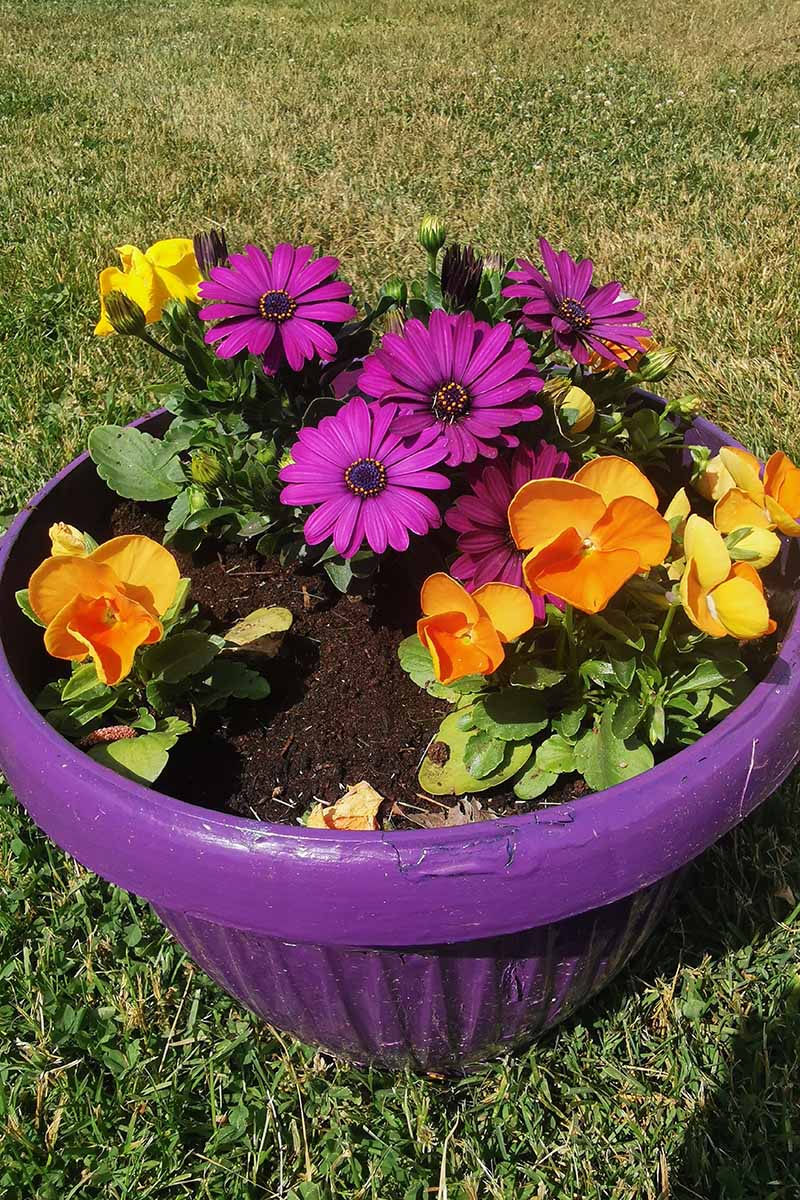
Carefully remove an osteospermum seedling from the cell tray and plant it where you want it to go, based on the recommendations outlined below.
Do your absolute best to baby that little hunk of soil the seedling or cutting is growing in. It’s frighteningly easy to damage the precious roots by carelessly handling the soil during transplanting.
In general, don’t worry about digging an enormous hole for your African daisies! As long as the soil I’m planting in isn’t too compacted, a hole that is about an inch wider and deeper than the root ball is perfect.
If you’re planting into some seriously compacted soil, you can dig out as much as twice the depth and diameter as your container’s size and backfill with some higher quality, more porous topsoil.
You can skip all that scariness by using biodegradable seed cells. These cells are made from natural materials and will break down easily when planted in the ground.
I have a love-hate relationship with these because they’re awesome when they work, but when they don’t work, they’re pieces of junk.

I think the trick is to buy good quality biodegradable seed cells like these available via Amazon. That way, it’s not likely to fall apart before you’re ready to transplant.
A final trick is to tear or cut off the very bottom of these seed cells when planting your osteospermum (or anything else, for that matter), so the roots can grow unimpeded.
How to Grow
I’ve got a good track record for loving and favoring plants that need about zero love and care, so osteospermums are an exception to my usual preference.
These aren’t tender and delicate babies, but they are absolutely at their best with some regular fertilizing and deadheading.
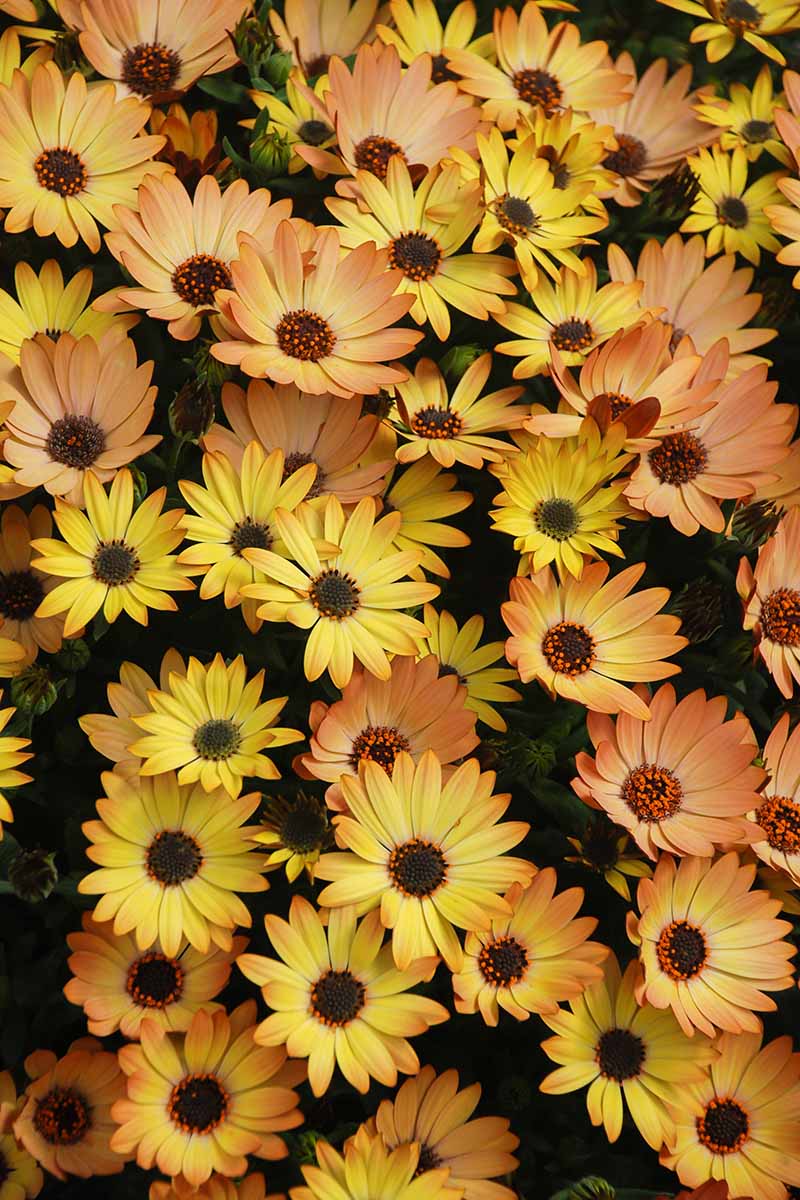
Don’t worry, it’s not as bad as it sounds. I just really don’t like fertilizing and deadheading!
Soil and Climate Needs
Overall, you’re going to want to look for a place in your garden with well-drained soil that is regularly watered, but never swampy and soaked.
Full sun is the ideal condition for your osteospermum. Anything less than that will provide you with pretty, but lackluster, Cape daisies.
Ideally, the growing area will have rich soil as well. Mixing in some compost at the beginning and end of the growing season is a good way to ensure this, but regular fertilizing will do the trick as well.
Fertilizing
You can fertilize your Cape daisy regularly for best results, as often as every two to three weeks during the blooming period. You can cut back to once monthly during the hot summer.
Everyone has their favorite fertilizers, and pretty much anything geared towards flowers and annuals will work for these plants.
My personal favorite options are to use Espoma Plant-Tone, available via Amazon, once a month – a light sprinkling around the dripline of the plant.

I follow that up with regular applications of Jack’s Classic Fertilizer, also available via Amazon.

I’ve found the monthly Espoma feeding plus applying Jack’s in a three-week cycle is the ticket for big ol’ blooms on your osteospermum.
Sometimes this schedule will overlap. If it does, reapply the granular fertilizer, wait a week, and then begin using a liquid feed again.
Keeping the soil in your garden or containers rich is an easy way to ensure better blooms.
I mix in compost every year if I reuse the same growing medium in my containers (and I do that most years), and give a nice quarter-inch layer to my garden beds at the beginning of every season.
Osteospermums are heavy feeders, so I’ll add a second application of compost in September as well, as the season is winding down.
Watering
Cape daisies can handle periods of drought but they don’t like to do it, so do your best to ensure they’re getting regular drinks without ever drying out for too long. At the same time, you don’t want your osteospermum to be sitting in wet, stagnant soil.
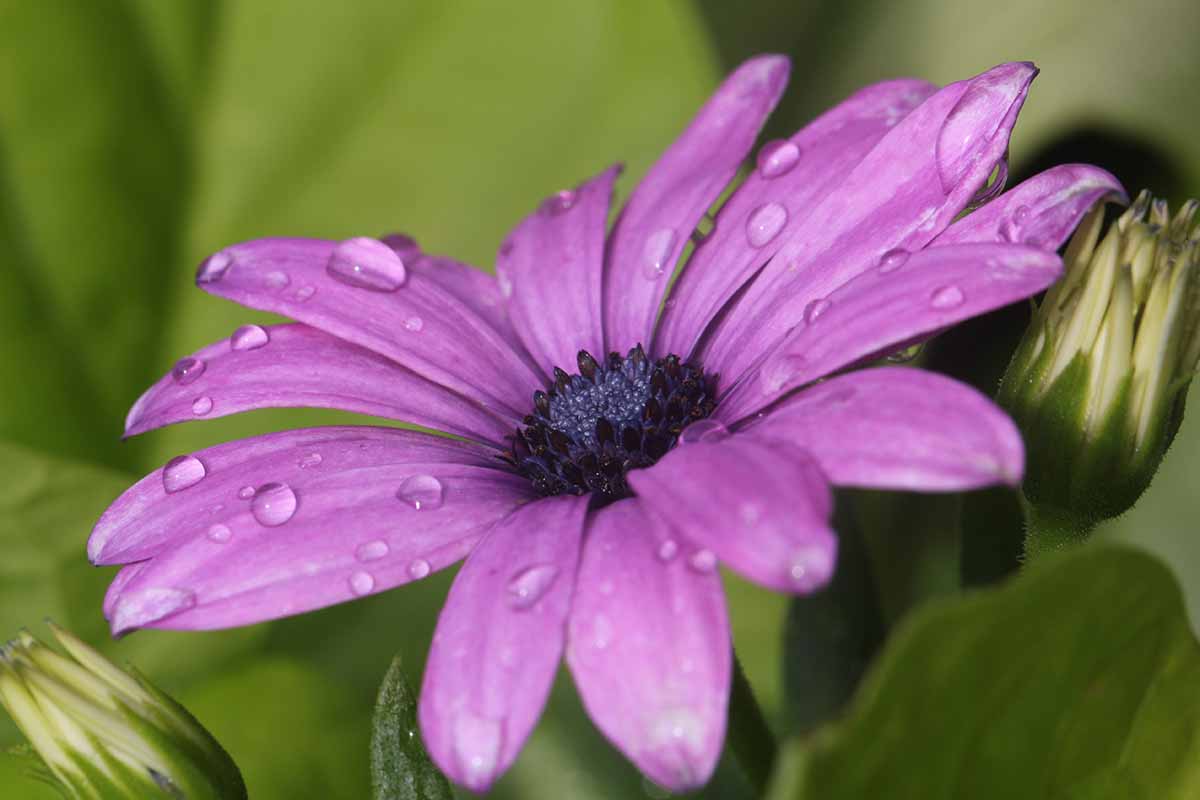
Shoot for about an inch of water a week, which is the generally accepted amount of water most ornamental landscape plants want. If your Cape daisy is in intense sun or the soil is very fast-draining, you might need to provide more frequent drinks.
While I often let my plants start to flag and look thirsty before giving them a second drink, it’s not recommended with osteospermums. Keep them watered, but don’t let them get wet feet!
Growing Tips
- Give your osteospermum regular feedings throughout the season for the best blooms.
- Keep them watered regularly but let the plants dry out between their drinks.
- When outside of their blooming cycle, dial back your feeding cycle.
Maintenance
Don’t be shy, guys, when it comes to deadheading your osteospermums. The Cape daisy responds as well as marigolds and geraniums when it comes to deadheading and finicky maintenance.
You can pluck the spent flower heads off with your thumb and forefinger, or use a sharp pair of pruners or scissors to do the deed.
Really, don’t be shy about it – it’s okay!
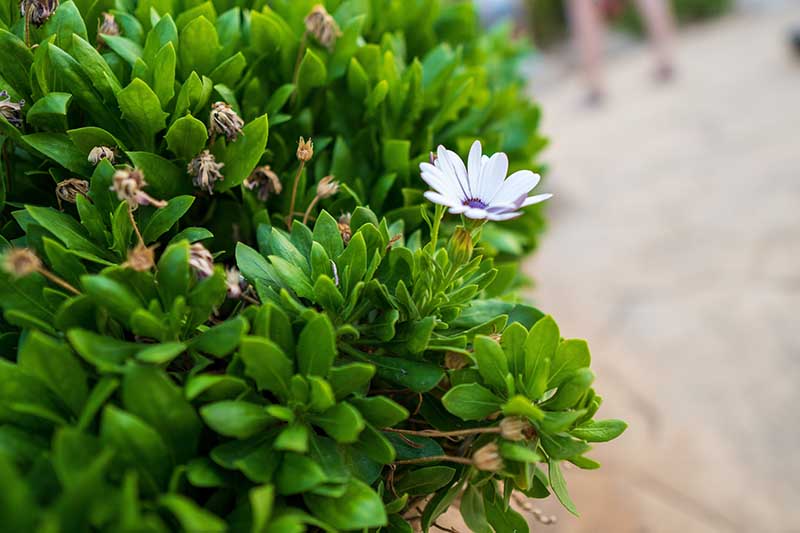
I tend to cut osteospermum back pretty heavily in the summertime, since the Cape daisy tends to take a break during the hottest months of the year.
It’s a good opportunity to cut the plant back by about a third and let it fill out fully so that when the weather cools down in September, it’s ready to bloom like a wild animal.
If you live in the USDA Hardiness Zones 9 to 11, your osteospermum can be considered a short-lived perennial! All of the previous conditions apply, but you’ll want to cut your Cape daisy down to a height of about four inches in the springtime.
Cultivars to Select
Any osteospermum selections you’re interested in are going to have the same basic growing conditions and requirements as we detailed above.
Asti™ series seeds are available from True Leaf Market, either in white or a mix of colors including pinks and purples.
They’re a solid choice and the colors are rich enough that they’ll suit just about any location where you could use a splash of it. This series was an All-America Selections bedding plant winner over multiple years, so it’s got quite the pedigree.
As I’ve got a soft spot for orange flowers, the ‘Orange Symphony’ is an excellent choice here, and it’s available from Nature Hills Nursery.
Follow the standard planting rules for osteospermum and your ‘Orange Symphony’ will be quite happy. This is a plant grown by Proven Winners, probably the most reliable and high-quality major plant nursery I’ve had the pleasure of working with.
If you’re looking for something that’s less explosive in color, try ‘Lavender Frost.’ The flowers are mostly white but practically glow with a lavender tint.

You can find packets of 20 seeds available from S-Pone via Amazon.
On the other side of the coin, maybe you want explosive color. In that case, check out the Akila® Grand Canyon mix, a riot of warm colors very similar to the red rocks of the American Southwest.

These are excellent choices for a wild flower garden, or any place really where you want to grab attention.
You can find packets of 50 seeds available from Garden Trends via Amazon.
Managing Pests and Disease
We’ve got good news and bad news for you here.
The good news is that osteospermum has very few herbivore pests, so you don’t usually need to worry about rabbits or deer eating up your cheery flowers.
However, the Cape daisy can have issues with a few insect pests and diseases. Don’t worry, though, with the right care these issues shouldn’t present themselves!
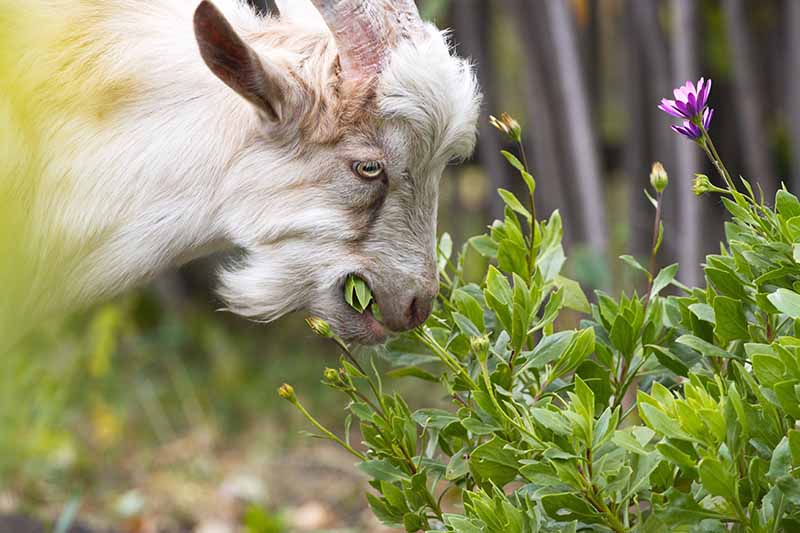
Remember too that a few pests on your osteospermum, or any plant for that matter, aren’t usually serious and don’t require any treatment.
If you have a healthy garden, you’ll have plenty of natural pest prevention in the form of predatory insects that gobble up anything looking to take a bite out of your Cape daisy.
And with the right placement and watering habits, most fungal infections should be a non-issue.
Insects
You’re likely to only see a few insect issues on your osteospermum. Fortunately, plenty of predators may exist naturally in your garden to combat these pests.
For both aphids and thrips, I use Bonide Systemic Insecticide if the plants are growing in a container.

This granular product is available from Amazon in eight-ounce containers.
Otherwise, a horticultural oil works wonders, and it’s less harmful to beneficial insects than other options when applied correctly. Every product will have its own specific instructions for use, so be sure to follow them.
If you’re applying a spray, it’s best to do it early in the morning before pollinators will start visiting your flowers.
Horticultural oil is fantastic for killing eggs and freshly hatched pests, but it can still kill adults and certain types of beneficial insects, so that early-morning application will target the pests before more susceptible insects are active.
I have to stress again that most of the time, it’s in the best interest of your plants and your garden to let nature take the wheel and eliminate insect pests.
If you do decide you want to spray them away, that’s fine, but remember – a little bit of these treatments goes a long way.
Aphids
The ever-present pest in every garden, aphids can dig into your osteospermums and leech out all of the food your plant is trying to process into bigger, fuller blooms.
A bad aphid infestation can quickly spiral out of control and impact your other plants, but this level of infestation isn’t especially common.
Thrips
Most of the thrips you might encounter are going to be hitchhikers from the greenhouse where your live plants were grown. En masse they can be a serious problem, but this is a pretty uncommon pest to see “in the wild” on your Cape daisy.
Read our guide to dealing with thrips for more info.
Whiteflies
Whiteflies are annoying pests, and difficult ones to get rid of.
Horticultural oil is your best bet here, but whiteflies can be extremely difficult to permanently remove.
As long as the whiteflies aren’t completely taking over, horticultural oil will keep them under control. But if the infestation is serious, it’s best to destroy the plant to prevent the bugs from spreading.
Earwigs
One of my favorite bugs in terms of appearance, earwigs can be disastrous for your osteospermum if only because they destroy the beautiful flower petals, and they do it at night so you won’t even have a chance to catch them in the act.
Earwigs will look for cool, damp places to rest at night, so keeping a tidy garden or container is your absolute best mode of prevention for keeping these pests away.

You can also make a little “trap” by combining olive oil and soy sauce in a shallow dish or bowl. The earwigs will climb into the appealing liquid and drown.
Learn more about how to deal with earwigs in our guide.
Slugs and Caterpillars
Though these aren’t related, both are constant pests in the garden, and these critters will often outright devour any greenery your Cape daisy has produced.
Enough natural predators exist for both of these that any potential damage from a caterpillar or slug is going to be cosmetic at best.
Your best form of defense here is to handpick each bug and toss it into your yard so a bird or other animal can have a tasty lunch.
Disease
Most osteospermums that succumb to disease are weakened first by environmental stressors, or as the result of poor growing conditions.
That said, I’m familiar with disgusting and muggy summers. When the air is like soup, there’s not much you can do to combat the rise of these issues.
Downy Mildew and Other Types of Fungal Disease
A regular issue in most gardens, downy mildew – caused by a variety of different types of water molds – is readily identifiable. Your osteospermum leaves will develop funny-looking spots and a fuzzy coating on the undersides.
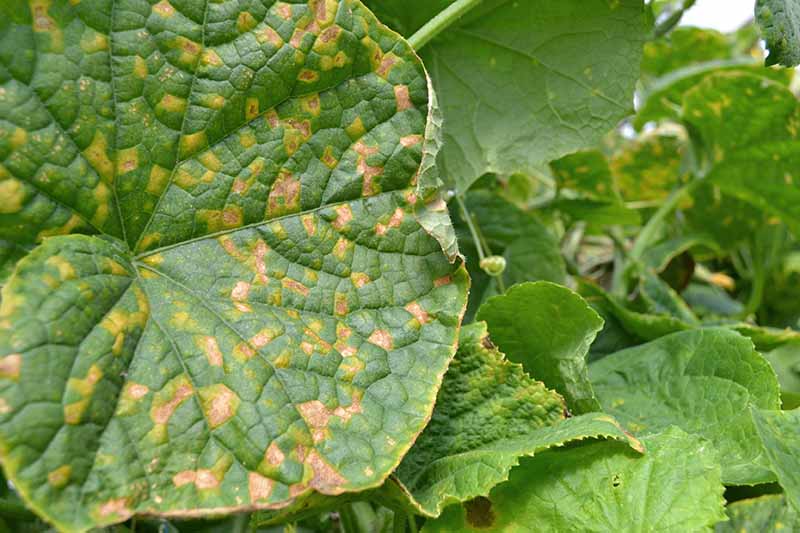
My best advice here is that a little downy mildew isn’t the end of the world, and it’s okay to let it sit. Remove infected material and destroy it to prevent further spread.
However, if the condition becomes severe, you’ll need to apply something like this copper fungicidal spray, available from Arbico Organics, to keep it in check.
Bonide Liquid Copper Fungicide
Because your osteospermums like that fast-draining soil, they can easily be bothered by a variety of fungal issues that may develop from improper watering practices.
A copper fungicidal spray can be used to treat these issues if they arise and aren’t kept away naturally.
You can avoid the spread of fungal issues by not splashing the plants’ leaves with water and ensuring there is adequate airflow between plants.
Most fungal issues begin in overly moist environments with a lack of airflow, so if you can eliminate these conditions you’re on the right path to a disease-free osteospermum.
Best Uses
While I love to use the Cape daisy as a container plant in most situations, it also grows very well in garden beds that receive full sun. I’ve had great luck growing Cape daisies with other spring-and-fall bloomers like snapdragons, pansies, and alyssum.

These flowers can be used to add a splash of color in an herb garden, and they do well with lavender and thyme especially.
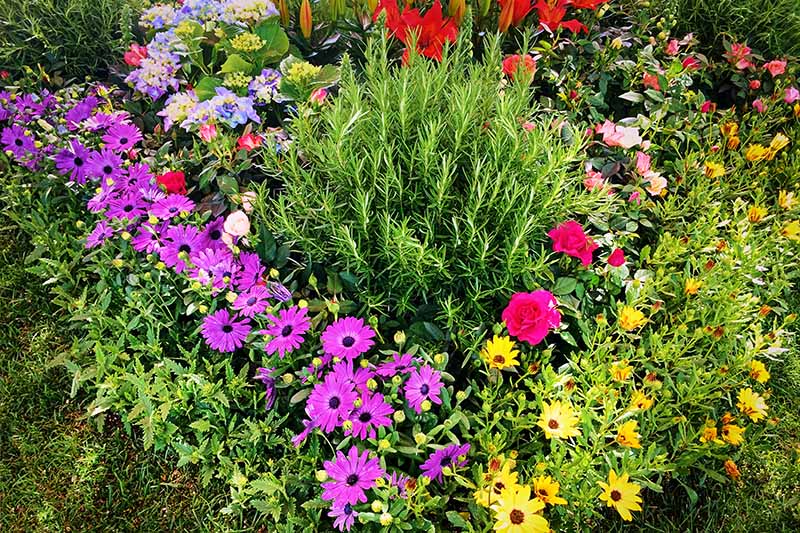
Osteospermum can fit very well with geraniums, marigolds, and other “summertime” annuals too, and they fill in a nice niche – the Cape daisies are in full bloom when their summer-loving friends are still growing, and they quietly retreat to the background when the marigolds and other warm-weather options are really exploding with blooms.
I’ve also planted Cape daisy with Gaillardia and Dichondra ‘Silver Falls’ and just loved the combination, especially with some dusty miller in the mix.
Quick Reference Growing Guide
| Plant Type: | Flowering perennial | Flower / Foliage Color: | Yellow, white, purple, pink, orange/green |
| Native to: | South Africa | Tolerance: | Short periods of drought |
| Hardiness (USDA Zone): | 9-11 | Maintenance: | Moderate |
| Bloom Time / Season: | Spring and Fall | Soil Type: | Organically rich |
| Exposure: | Full sun | Soil pH: | 5.5-6.5 |
| Time to Maturity: | 80 days | Soil Drainage: | Well-draining |
| Spacing: | 6-12 inches | Attracts: | Bees, other pollinators |
| Planting Depth: | 1/4 inch (seeds); depth of root ball (transplants) | Companion Planting: | Alyssum, dusty miller, geraniums, lavender, marigolds, pansies, snapdragons, thyme |
| Height: | 12-24 inches | Uses: | Landscape ornamental, containers, cut flower, garden beds |
| Spread: | 12-24 inches | Family: | Asteraceae |
| Water Needs: | Medium | Genus: | Osteospermum |
| Common Pests and Diseases: | Stem rot, leaf spot | Species: | Barbarae, caulescens, ecklonis, fruticosum, jucundum |
Grow Oodles of Osteospermum
What a great flower! We’ve learned all about the conditions osteospermums need to thrive and what troubles you might encounter in your garden when you’re growing them.
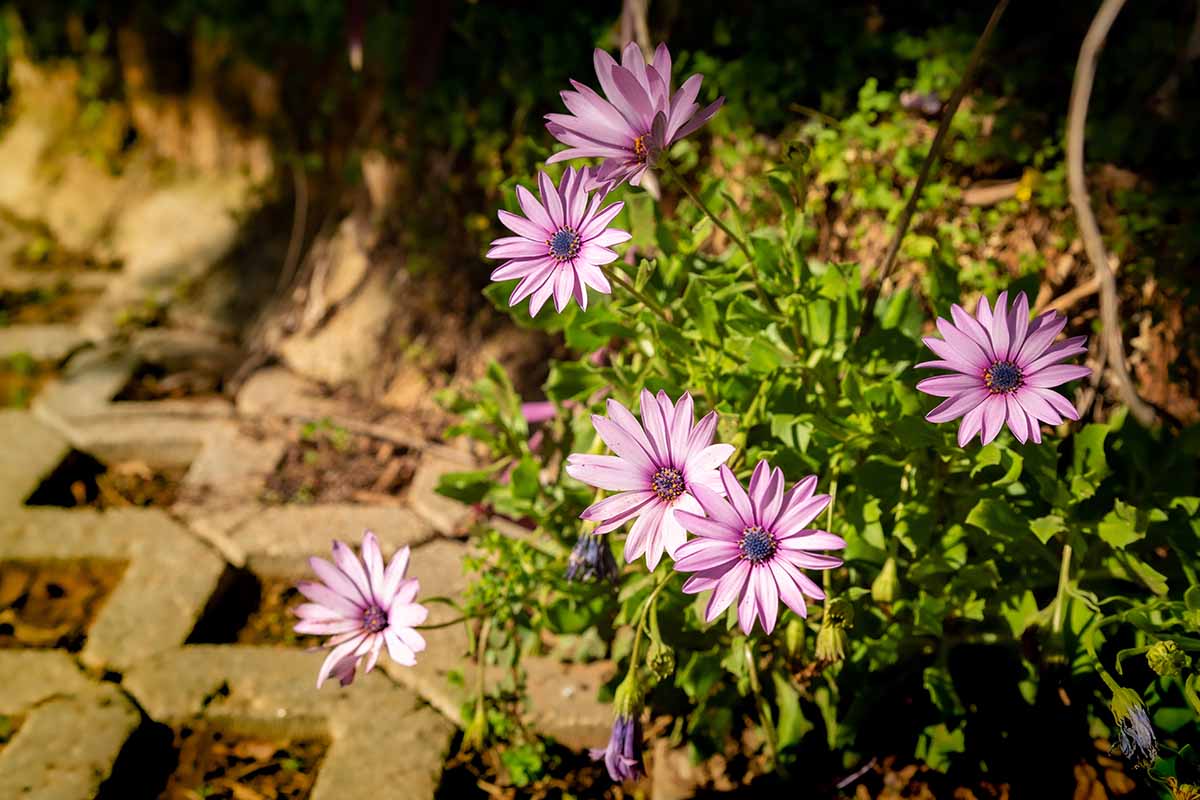
This is an excellent flowering annual, or perhaps it will grow as a perennial in your garden if you’re in the warmest USDA Zones.
Have any questions, comments, or insights to share after reading our osteospermum growing guide? Leave them below – we’re happy to read them all!
As always, thank you for reading Gardener’s Path. We’ll see you next time!
And for more information about growing daisies in your garden, check out these guides next:

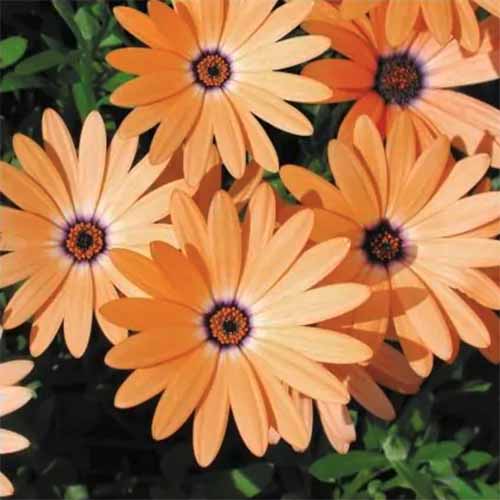

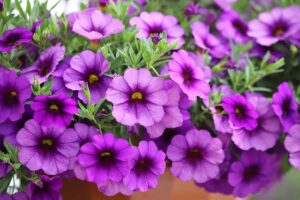

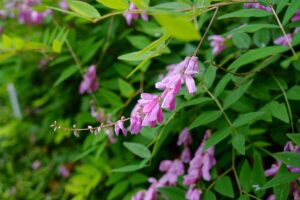
My daisies planted on the ground have become leggy and looks really sad.
Do I cut them off? There are some green leaves at the end of the leggy stems
Thanks for the info! I grabbed some beautiful Cape Daisy seeds, Osteospermum Eklonis, a bright white with gorgeous purple centers. I recognized them from seeing in a local garden planted along a city-maintained bike path last year. Wasn’t sure if perennial or not & this answered the question. I’m in 5B zone but have had 6’s overwinter beautifully. Understand this likely will NOT be the case here along Front Range in Northern Colorado but will be worth the efforts to even just have as annuals. ♡
That’s the way to do it! Give them a home while you can and enjoy the heckuva show they put on while around. Glad to hear you found that variety, I’m a sucker for white flowers and especially your described variety of Cape Daisy.